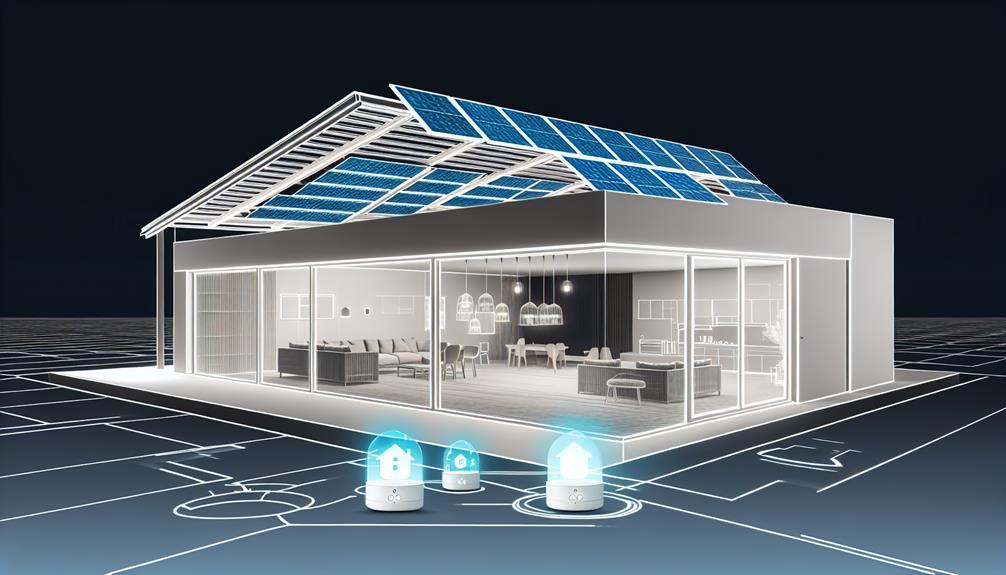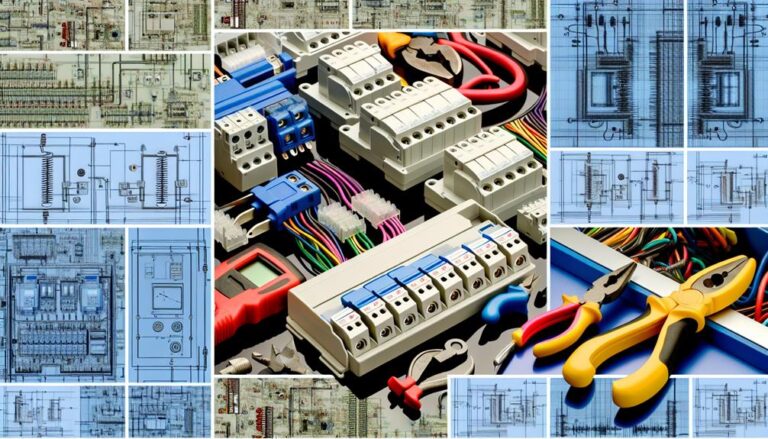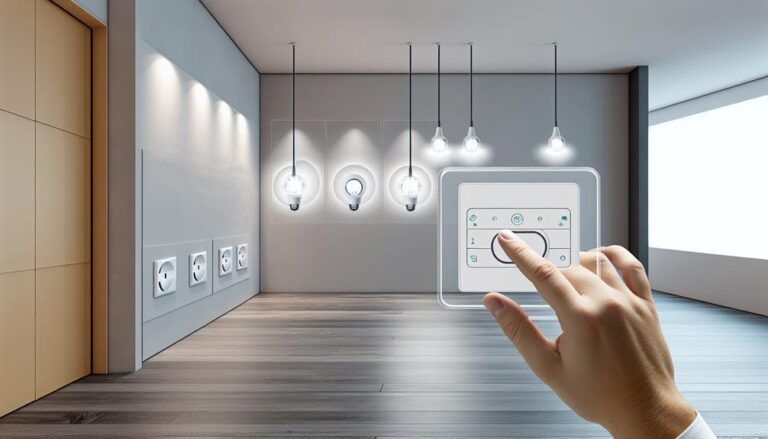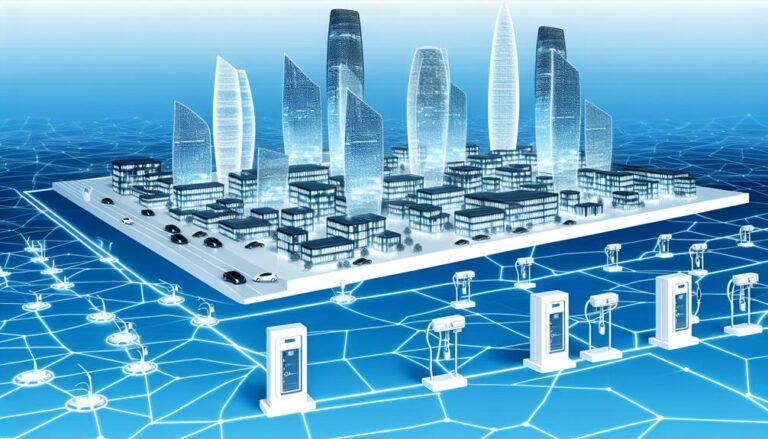Electrical Services for Energy Efficiency: Tips and Tricks
Step into the realm of energy efficiency, where the flickering flame of wastefulness is extinguished, replaced by the bright glow of sustainability.
It’s time to take control of your electrical services and unlock the secrets to conserving energy and saving money.
From upgrading appliances to implementing smart lighting solutions, this discussion will unveil a treasure trove of tips and tricks that will leave you eager to uncover the path towards a more efficient future.
So, buckle up and prepare to embark on a journey that will revolutionize the way you consume and utilize electricity.
Key Takeaways
- Conducting energy audits can help identify areas of energy waste and recommend energy-saving measures for buildings or facilities.
- Upgrading to energy-efficient appliances, such as those with ENERGY STAR certification, can result in significant energy savings.
- Implementing smart lighting solutions that utilize occupancy sensors and daylight harvesting can optimize energy usage and reduce maintenance costs.
- Optimizing HVAC systems through regular maintenance, programmable thermostats, zoning, and proper insulation can improve energy efficiency and prolong the lifespan of the systems.
Understanding Energy Audits
To gain a thorough understanding of energy audits, you must familiarize yourself with the comprehensive assessment process that evaluates the energy consumption and efficiency of a building or facility.
An energy audit is a systematic evaluation of a building’s energy usage and efficiency. It involves a detailed analysis of energy consumption patterns, equipment efficiency, and building envelope performance. The purpose of an energy audit is to identify areas of energy waste and recommend energy-saving measures that can improve the overall efficiency of a building.
During an energy audit, various energy-saving opportunities are explored, such as upgrading lighting systems, optimizing HVAC systems, and improving insulation. The assessment process typically involves on-site inspections, data collection, and analysis of utility bills and equipment performance. Energy auditors use specialized tools and instruments to measure energy consumption and identify potential energy-saving opportunities.
They also consider factors such as building occupancy, climate conditions, and operating schedules to provide accurate recommendations. By conducting energy audits, building owners and facility managers can gain valuable insights into their energy usage patterns and make informed decisions to reduce energy waste, lower utility costs, and enhance overall energy efficiency.
Upgrading to Energy-Efficient Appliances
By upgrading your appliances to energy-efficient models, you can further enhance the overall efficiency of your building and reduce energy waste. Here are some tips to help you make the most out of this upgrade:
- Choose appliances with ENERGY STAR certification: Look for the ENERGY STAR label when purchasing new appliances. These appliances meet strict energy efficiency guidelines set by the Environmental Protection Agency and can help you save up to 30% on energy bills.
- Consider the energy efficiency rating: Appliances with higher energy efficiency ratings consume less energy and perform better. Look for appliances with higher Energy Efficiency Ratio (EER) for air conditioners, Seasonal Energy Efficiency Ratio (SEER) for heat pumps, and Energy Factor (EF) for water heaters.
- Opt for appliances with smart features: Smart appliances can automatically adjust their settings based on usage patterns and energy demand. They can also be controlled remotely, allowing you to optimize energy usage even when you’re away from home.
- Properly maintain your appliances: Regular maintenance, such as cleaning filters, checking seals, and adjusting settings, can help your appliances operate at maximum efficiency and extend their lifespan.
Implementing Smart Lighting Solutions
How can smart lighting solutions enhance the energy efficiency of your building? By implementing smart lighting solutions, you can significantly reduce energy consumption and costs. Smart lighting systems utilize advanced technologies such as occupancy sensors, daylight harvesting, and dimming controls to optimize energy usage. These systems automatically adjust lighting levels based on occupancy and available natural light, ensuring that lights are only on when needed and at the appropriate brightness. This not only saves energy but also extends the lifespan of the lighting fixtures, reducing maintenance and replacement costs.
To give you a clearer picture, here is a table showcasing the potential energy savings of implementing smart lighting solutions compared to traditional lighting systems:
| Traditional Lighting | Smart Lighting Solutions | |
|---|---|---|
| Energy Savings | 0% | Up to 70% |
| Cost Savings | 0% | Up to 50% |
| Maintenance Savings | 0% | Up to 80% |
| Environmental Impact | High | Low |
| Flexibility | Limited | High |
As you can see, smart lighting solutions provide substantial energy and cost savings, while also minimizing environmental impact. Additionally, these systems offer greater flexibility, allowing you to personalize and control your lighting settings according to your needs and preferences.
Implementing smart lighting solutions not only enhances the energy efficiency of your building but also grants you the freedom to create a more sustainable and comfortable environment.
Optimizing HVAC Systems for Efficiency
Now that you understand how smart lighting solutions can enhance energy efficiency in your building, let’s focus on optimizing HVAC systems for maximum efficiency. Here are some tips to help you achieve this:
- Regular maintenance: Schedule regular maintenance for your HVAC system to ensure optimal performance. This includes cleaning or replacing air filters, checking refrigerant levels, and inspecting motors and fans. By keeping your system in top condition, you can reduce energy waste and extend its lifespan.
- Programmable thermostats: Install programmable thermostats that allow you to set different temperature levels for different times of the day. This way, you can automatically adjust the temperature when the building is unoccupied, saving energy and reducing costs.
- Zoning: Implement zoning in your HVAC system, which involves dividing your building into different temperature zones. This allows you to heat or cool specific areas as needed, rather than wasting energy on unoccupied spaces.
- Insulation: Ensure proper insulation in your building to prevent heat loss in the winter and heat gain in the summer. This reduces the workload on your HVAC system and improves energy efficiency.
Harnessing the Power of Renewable Energy Sources
To enhance energy efficiency in your building, consider harnessing the power of renewable energy sources.
Renewable energy sources are derived from natural processes that can be replenished, such as sunlight, wind, rain, tides, and geothermal heat. By utilizing these sources, you can reduce your dependence on traditional fossil fuels and contribute to a more sustainable future.
One of the most common ways to harness renewable energy is through solar power. Installing solar panels on your building’s roof can convert sunlight into electricity, which can then be used to power your electrical systems. Additionally, excess energy generated by solar panels can be stored in batteries or fed back into the grid for later use.
Another renewable energy source to consider is wind power. Wind turbines can be installed on your property to capture the kinetic energy of the wind and convert it into electricity. Wind power is particularly effective in areas with consistent wind patterns.
Hydropower is another viable option, especially if your building is located near a river or stream. By utilizing the force of flowing water, hydroelectric power can be generated and used to meet your electrical needs.
Geothermal energy is yet another renewable energy source that can be harnessed. This involves tapping into the natural heat beneath the Earth’s surface and using it to generate electricity or heat your building.







